Click here and press the right key for the next slide (or swipe left)
also ...
Press the left key to go backwards (or swipe right)
Press n to toggle whether notes are shown (or add '?notes' to the url before the #)
Press m or double tap to slide thumbnails (menu)
Press ? at any time to show the keyboard shortcuts
Q1
How do observations about tracking support conclusions about representing models?
Q2
Why are there dissociations in nonhuman apes’, human infants’ and human adults’ performance on belief-tracking tasks?
Q3
Why is belief-tracking in adults sometimes but not always automatic? How could belief-tracking be automatic given evidence that it significantly depends on working memory and consumes attention?
1. models
2. processes

08: A Dual-Process Theory of Mindreading
[email protected]
implicit / modular
/ ‘system-1’ / ...
innate
informationally encapsulated
domain specific
subject to limited accessibility
speedy
tacit
subpersonal
unconscious
...
‘it seems doubtful that the often long lists of correlated attributes should come as a package’
Adolphs (2010 p. 759)
‘we wonder whether the dichotomous characteristics … are … perfectly correlated
Keren and Schul (2009, p. 537)
a fresh start



Dual Process Theory of Mindreading (core part)
Two (or more) mindreading processes are distinct:
the conditions which influence whether they occur,
and which outputs they generate,
do not completely overlap.
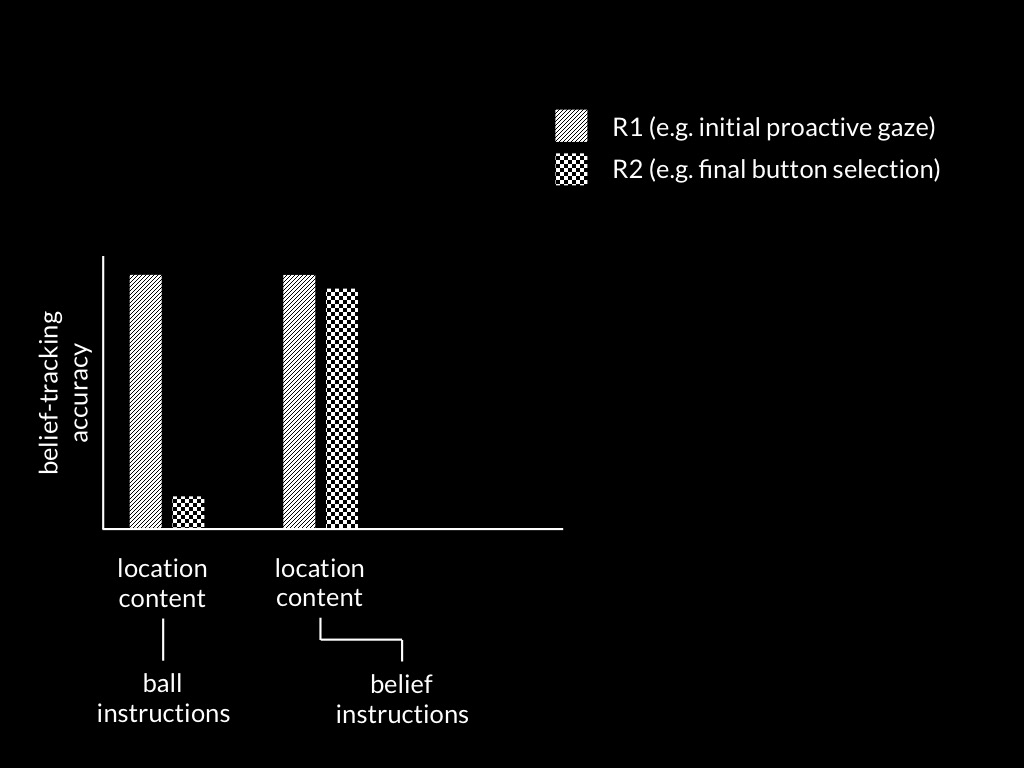
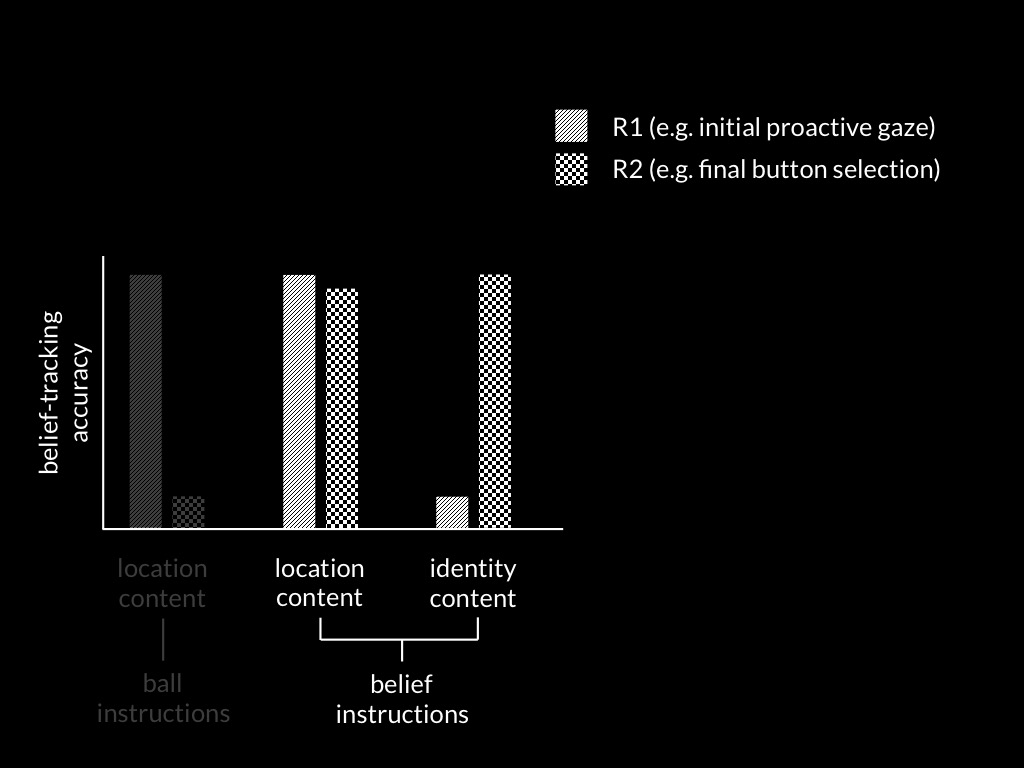

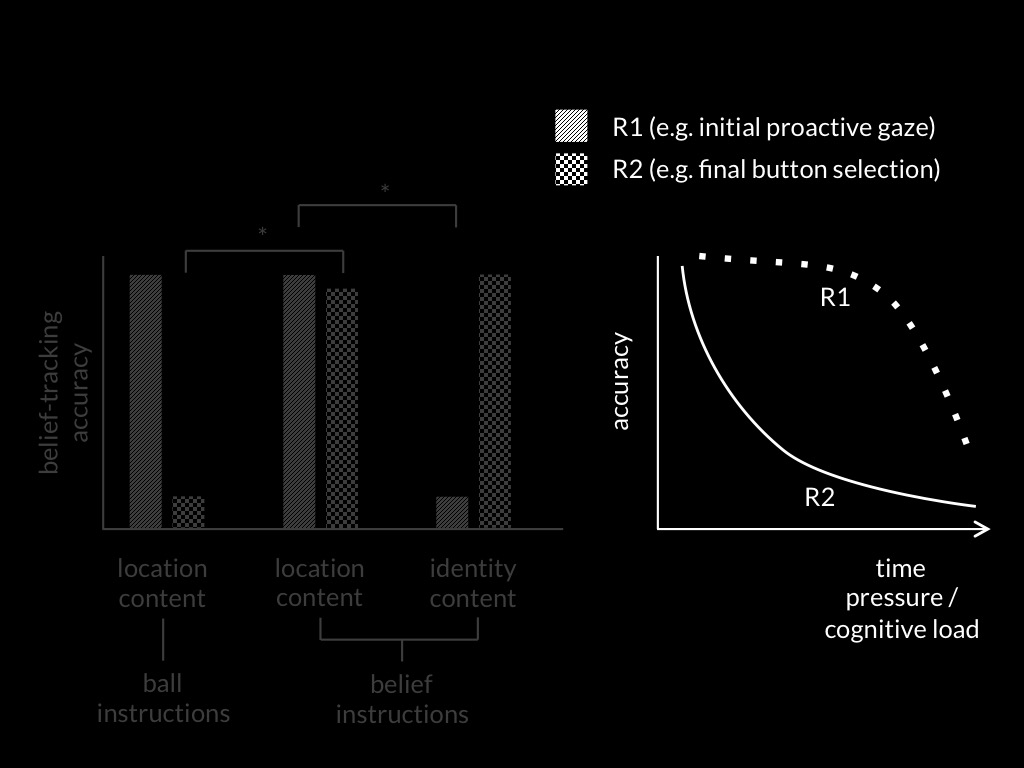
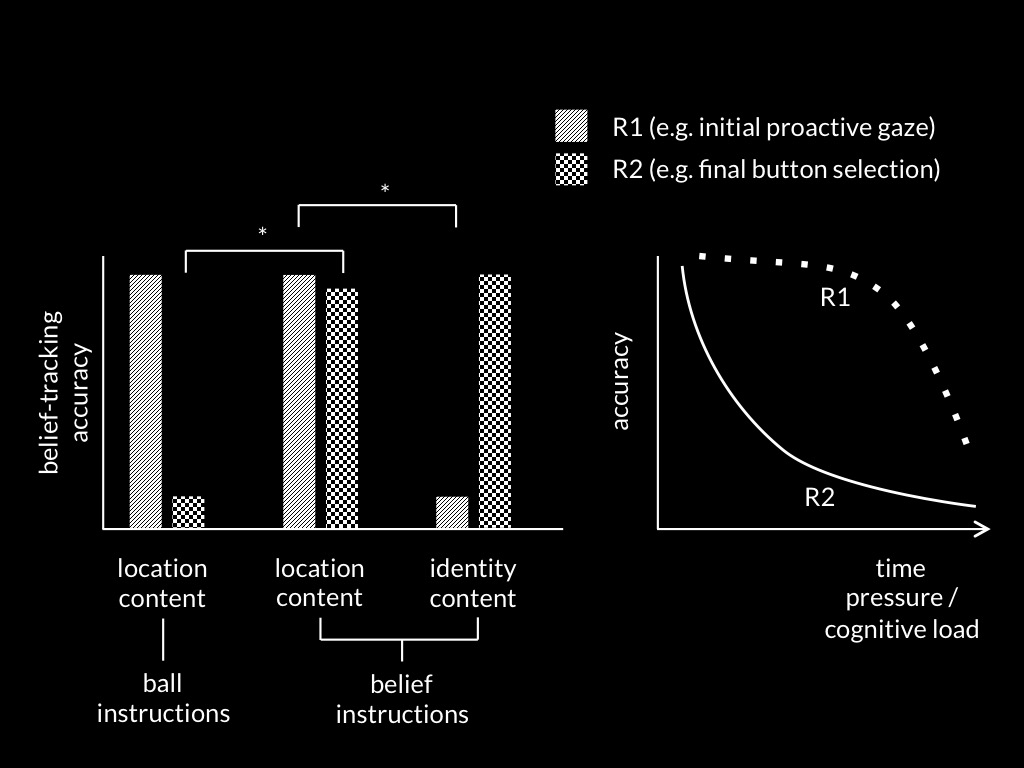
Process 1 -> Response 1
Process 2 -> Response 2
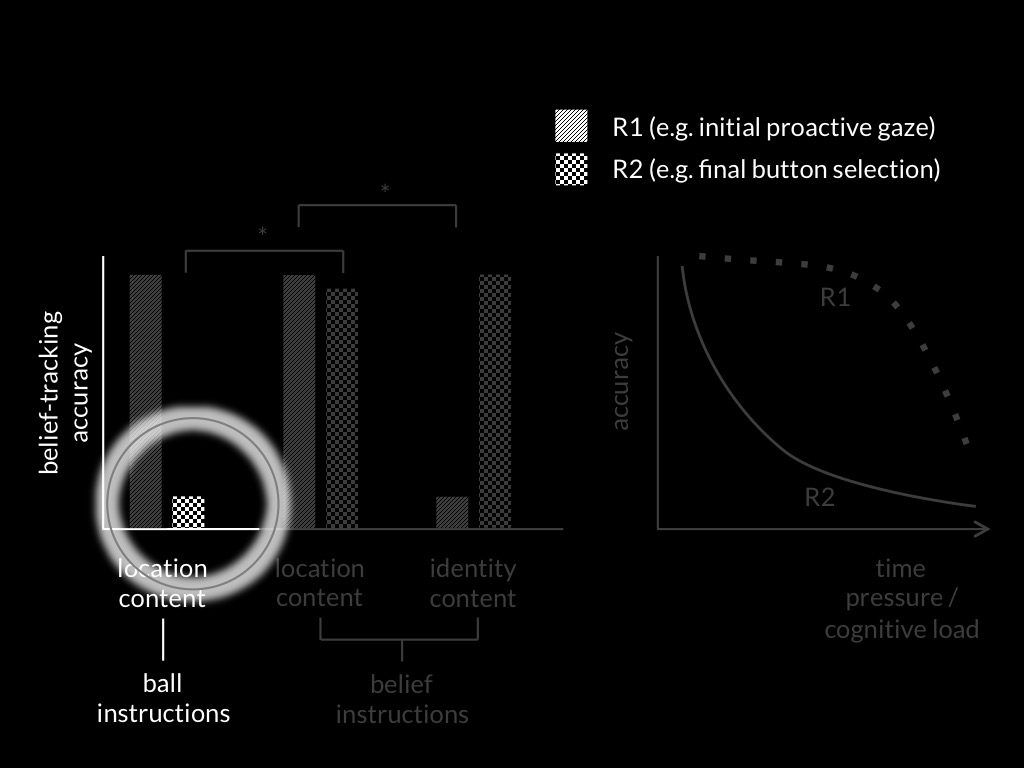


Dual Process Theory of Mindreading (core part)
Two (or more) mindreading processes are distinct:
the conditions which influence whether they occur,
and which outputs they generate,
do not completely overlap.
Q1
How do observations about tracking support conclusions about representing models?
Q2
Why are there dissociations in nonhuman apes’, human infants’ and human adults’ performance on belief-tracking tasks?
Q3
Why is belief-tracking in adults sometimes but not always automatic? How could belief-tracking be automatic given evidence that it significantly depends on working memory and consumes attention?
looking ahead ...
1. Mechanisms
Conjecture: Some mindreading processes are more automatic than others.
Prediction: Varying task instructions will differentially affect responses indicative of mindreading.
2. Models
Conjecture: Some automatic mindreading processes rely on minimal models of the mental.
Prediction: Those mindreading processes are subject to the signature limits of minimal models.
Conjecture: Some automatic mindreading depends on motor processes.
Prediction: Impairing motor processes can impair mindreading.